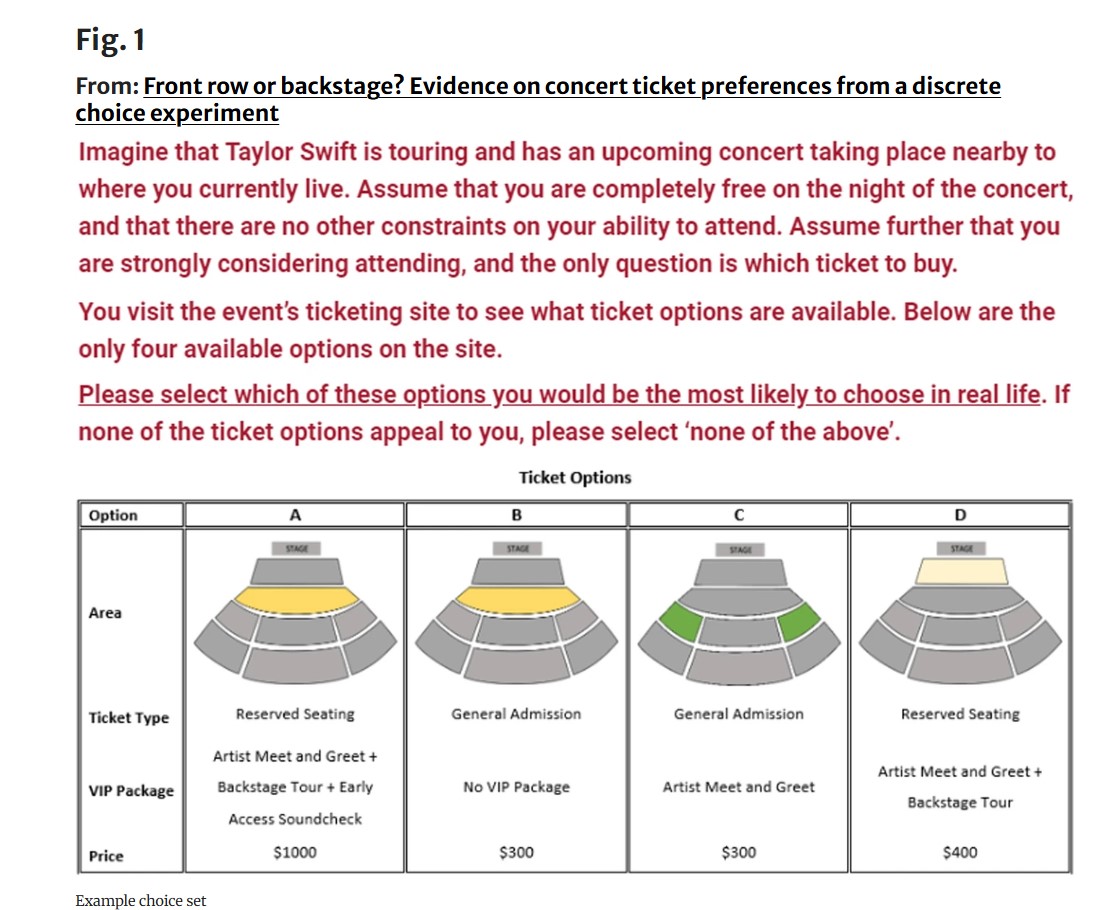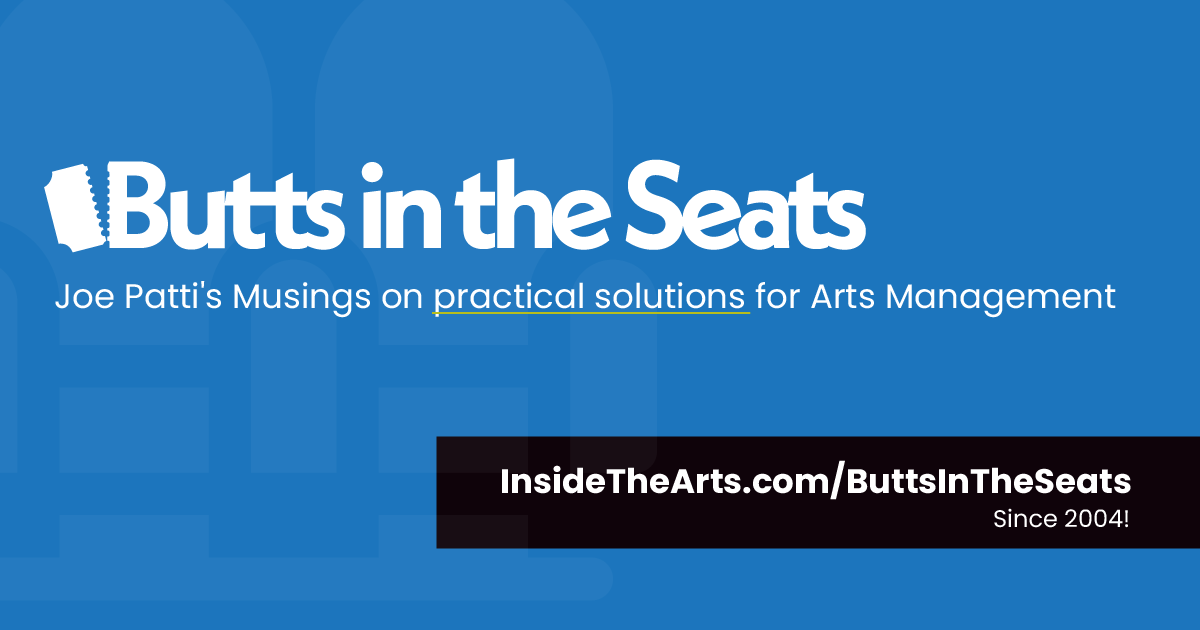Bill Byrnes recently released a resource update to his textbook, Management and the Arts which included a research article about what factors influence what seating locations ticket purchasers prefer in a concert venue. (Note: Bill was the head of my degree program at Florida State University when I earned my MFA in Theater Management.)
As part of the study, the authors created a hypothetical concert venue which they used as the basis to ask people about their seating preferences when seeing a favored artist performing a favored genre of music including what price they would pay, whether they preferred reserved or general admission. Additionally they wanted to explore how willing people would be to purchase a VIP package based on cost and type of access they might be granted.
Six levels were chosen for the VIP package attribute, each comprising different combinations of three VIP services: meeting the headlining artist, taking a backstage tour, and accessing the venue early to watch the soundcheck.
Noting that people may have different seating preferences based on the venue they were attending, the researchers conducted a pre-study survey to determine the best general characteristics for their hypothetical venue.
Each area differs in terms of distance from the stage, elevation, and viewing angle. Variations in distance and angle were communicated to participants through the hypothetical venue map, as displayed in Table 1. Additionally, participants were informed that Areas 1 and 2 were located on the ground floor, Areas 3 and 4 on an elevated level, and Areas 5 and 6 on the upper level.
Here is an example of how the choices for seating, pricing, and VIP package was presented to survey takers when the artist was Taylor Swift.

Among the findings of the study are that people value being closer to the stage than further away. Reserved seating is more valuable than general admission seating. However, for people with children and older respondents, reserved seating held significantly more value. The researchers suggest that people without children and younger attendees are generally indifferent to whether seating is general admission or reserved. Whereas those who are older or have children are more willing to pay a premium for reserved seats.
In terms of the VIP package, people were more interested in meet and greets with the artist than backstage tours and early admission to soundchecks.
In terms of price, the study found that there isn’t a lot of consistency associated with specific consumer characteristics and as a result, there are limits to what artists can charge based on assumptions about consumer groups.
…there is little evidence of substantial preference heterogeneity associated with consumer characteristics. This is turn implies that limits exists with regards to musicians’ ability to practice price discrimination by targeting specific ticket types at particular consumer groups.
Furthermore, the evidence on variation in venue area preferences implies that there are limits to the returns musicians can generate by employing between—and within—venue area price discrimination.
While I was reading this study i was comparing their findings to the writings of folks like Sean Kelly at Vatic, a company that specializes in using data to dynamically price venues in order to optimize ticket revenue. My first thought was that because they were having people choose huge sections of seating, they weren’t really drilling down to discover the specific preferences people have about their seating and the price they are willing to pay.
When they look at those yellow sections in the maps above, they are imagining themselves sitting in a specific seat for which they would be willing to pay the suggested price. Ten seats to the right or left of that (or away from the aisle), they may not be willing to pay as much.
On the other hand, the researchers say there is much more capacity for musicians to generate revenue through offering VIP packages. People seem to show a greater willingness to pay more for those experiences. Though there is a suggestion that the mix of experience and cost would be specific for each artist to discover.
However, research shows that offering VIP packages can create dissatisfaction among non-VIP fans so artists who wish to cultivate an environment of fairness may choose not to offer them. Similarly, dynamic pricing may also result in a perception of unfairness. There is apparently an association made between dynamic pricing and non-traditional distribution methods which appear to disadvantage the average ticket buyer.
Indeed, the use of dynamic pricing may be constrained by consumer concerns associated with perceived fairness, and the disdain consumers typically display for non-traditional allocation methods (Sonnabend, 2019; Roth, 2007).
Indeed, important parallels exist between the contemporary experience with dynamic pricing and that of ticket auctions, the use of which has declined over time despite evidence that it enabled the market to work more efficiently (Budish & Bhave, 2023). If consumers continue to respond with repugnance to non-traditional pricing strategies in the music industry, understanding how musicians can engage in optimal posted ticket pricing when organizing concerts will remain important.
A couple caveats to note. 1 – There were a number of hypothetical elements in this study despite referencing real music artists. 2 – While there are lessons applicable in other areas, this study was conducted with self identified attendees of five specific genres of music – Pop, Rock/Alternative, HipHop/RnB, Dance/Electronic and Classical. It doesn’t include other music genres, theater, musical theater, family theater, dance, etc., so may not be completely reflective of the preferences of those audiences. Nor may it be applicable to smaller venues.

